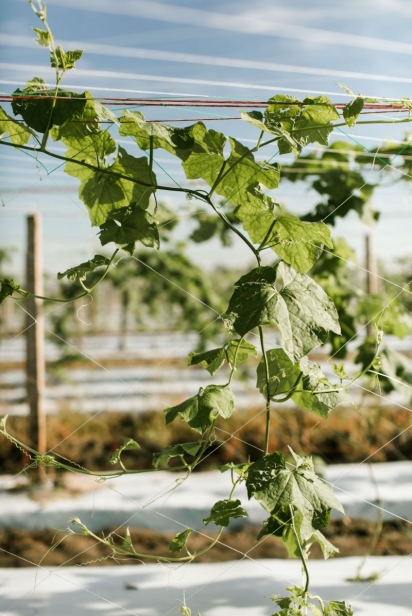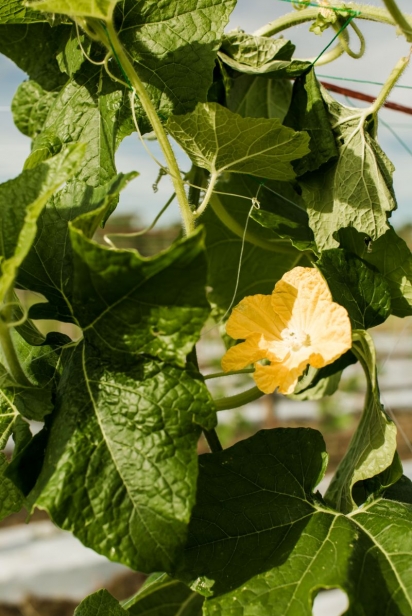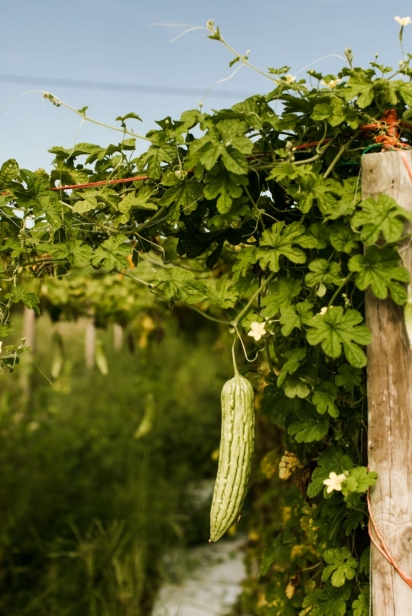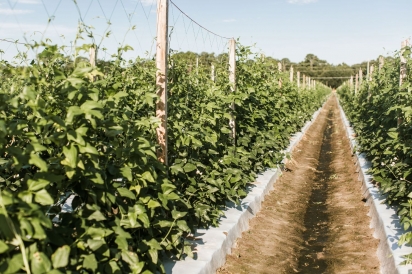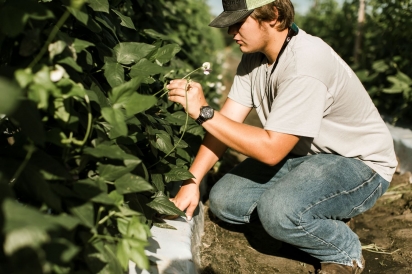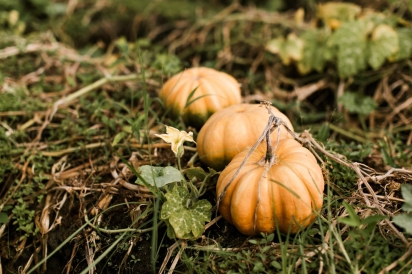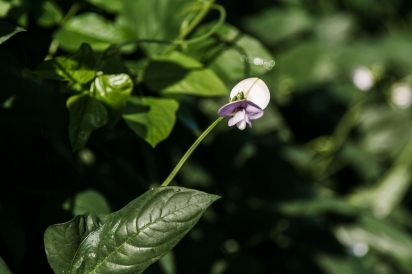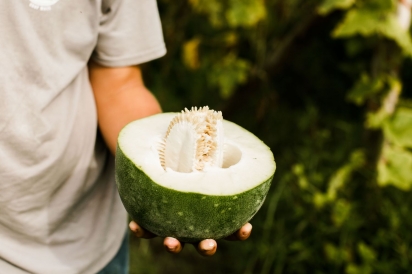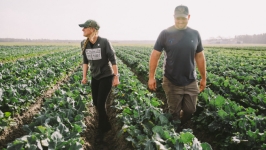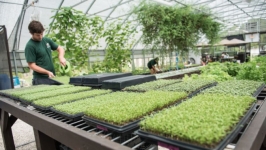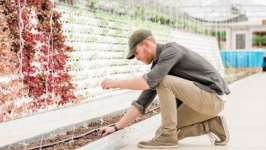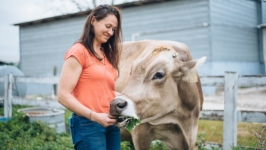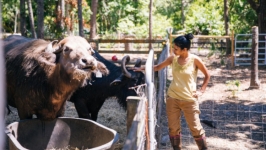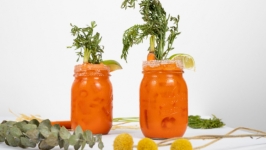Asian Vegetables Find a Home in St. Johns County
Bitter melon. Bok choy. Long bean. Chinese okra. What do they all have in common? Not only are they staples in many Asian cuisines, they are also some of the vegetable crops to be found on farms in St. Johns County. In fact, the county’s commercial production of these vegetables is increasing; out of more than 34,000 acres of farmland, nearly 5,000 acres have been planted with Asian vegetables in 2020.
St. Johns County is known for producing potatoes and cabbage (the community of Hastings has been called the Potato Capital of Florida), but lately there’s been a shift in the crops you can spot in fields. In the 1990s, there were almost 30,000 acres of potato farmland in the area. Ten years ago, there were about 18,000 acres. A recent census count shows that acreage is down to approximately 8,400. There are many factors for this decline, including competition with other markets, slim profit margins, development of agricultural land for residential and commercial uses, transportation costs and increased regulation of fertilizers and pesticides. Additionally, not only has the amount of farmland and output shrunk: the harsh reality is that not every farmer has a son or daughter who wants to continue the tradition.
Several local farms have made a shift to other crops as a way to keep the family business going. As you wind along the agricultural route of SR-207 through Elkton and Hastings, you’ll spot acres of stakes and trellises at Sykes Family Farms. Bucky Sykes and his son John started growing 100 acres of Asian vegetables in 2013, and now have 2,400 acres of bitter melon, long beans, bok choy and other crops. They were eager to diversify with something other than potatoes and did so by partnering with D&A Farms out of Jacksonville.
“I like watching the plants grow,” says John. “It’s enjoyable to ride around the fields and watch the crews harvest the crops.” John and his father were some of the first in the area to start producing Asian vegetables. Now, the Sykes family sells their produce to several grocery chains in Florida, including Publix and Wal-Mart. California, New York and Canada are also popular markets for these crops. John finds it “rewarding to go into the stores and see your produce there,” especially after the tremendous effort it requires to grow these types of vegetables.
With the introduction of Asian vegetables into their production cycle, the Sykes’ operation continues year-round. The subtropical climate makes it ideal for one and sometimes two seasons to grow Asian vegetables, since multiple crops can be produced more than once in a calendar year. Yet that same benefit can also be a disadvantage. John quickly notes that the biggest challenge he faces with producing Asian vegetables is Mother Nature. Asian vegetables are actively growing and the plants are at risk during hurricane season, when other crops like potatoes and broccoli are not yet in production.
While some residents may deal with flooded yards after heavy summer rains, Sykes and other local farmers worry that the storms may decimate their fields and reduce or destroy their yields. Saturated fields can be trouble for plant growth, but local soils are otherwise ideal for growing Asian vegetables, which prefer a loamy soil. The slightly acidic soil in Hastings and Elkton is mostly a sandy loam texture, containing a mixture of predominantly sand along with silt and clay. The clay layer can make drainage difficult, so farmers use a seepage irrigation system to lower and raise the water table. Precision technologies such as tile drainage allows farmers to adjust the table while moving water away from the site in an environmentally sustainable fashion.
The region’s potato production has a long history - 130 years of growing this crop. The local soils have accumulated up to 2,750 lbs./acre of phosphorus pentoxide but potato vines, because of their shallow and limited root systems, are not able to take it up. Potato growers keep applying phosphate fertilizer every season to help their narrow profit margins. Conversely, Asian vegetables have more developed root systems and can use the accumulated phosphorus in the soil. Hence, Asian vegetable farmers don’t need to apply phosphate fertilizers and Asian crops can enhance the economic and environmental sustainability of the region.
Asian vegetables are one of the many emerging alternative crops in Northeast Florida. Local farmers who have historically grown conventional crops such as potatoes and cabbage are now converting to sod and adding in rotations of legumes such as green beans and Brassicas like Brussels sprouts. These changes are difficult, but farmers are prepared to tackle new challenges.
At the University of Florida, researchers like Dr. David Liu are studying fertilizer recommendations, while Dr. Steven Sargent is working on extending shelf life of the fresh produce and Dr. Hugh Smith is studying products that can help control the diamondback moth, a local pest that can cause serious damage to Asian vegetables and make them unmarketable. “I am glad to see the expansion of these crops as we continue to assess the needs for food diversity and crop diversification for northeast Florida,” says Dr. Liu.
With an increased demand for locally grown food, agriculture is evolving in response. Our local community is still farming, and finding new and alternative crops to produce along the way to keep food on our tables.



